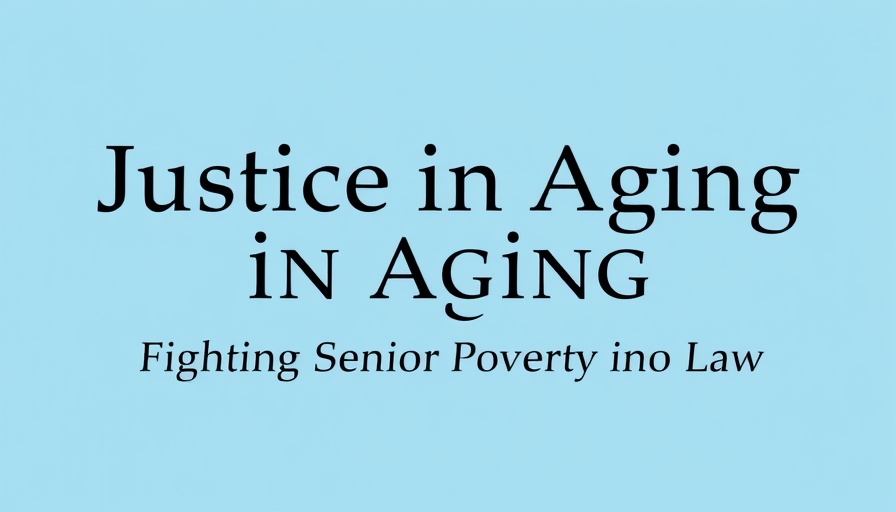
Understanding Glaucoma: The Silent Thief of Sight
Each January, we recognize Glaucoma Awareness Month, but the significance of understanding this prevalent condition extends far beyond the calendar. Glaucoma is often referred to as the 'silent thief of sight' because it can damage the optic nerve without presenting noticeable symptoms until considerable vision loss has occurred. According to the Glaucoma Research Foundation, approximately three million Americans are affected, with older adults facing the greatest risk—six times more likely to develop it after age 60. Early detection is paramount, making regular eye examinations crucial.
Who Is Most at Risk?
Seniors, especially those over 60, should be especially vigilant about eye health. Beyond age, a family history of glaucoma significantly increases risk levels. It has been found that African Americans and Hispanics are at even higher risk of developing glaucoma, with disparities in health outcomes observed in these populations. Dr. David S. Friedman, an expert in ophthalmology, emphasizes the lack of environmental factors associated with glaucoma, making genetics a key factor to consider. Regular screenings and consultations with healthcare providers are vital in these risk groups to facilitate early diagnosis.
Common Misconceptions About Glaucoma
Many individuals believe that eye health is a secondary concern, especially if they haven’t encountered discomfort or noticeable changes in their vision. However, glaucoma can progress without presenting any overt symptoms. By the time individuals become aware that something is wrong, significant damage may have already occurred. Recognizing the subtle signs—such as gradual loss of peripheral vision or difficulty adjusting to low light—can be life-altering. This misconception can jeopardize long-term vision quality, especially in seniors.
Proactive Steps for Vision Protection
While there is no cure for glaucoma, several actionable steps can mitigate its impact and maintain eye health:
- Maintain a Healthy Lifestyle: Prioritizing a balanced diet rich in nutrients such as omega-3 fatty acids, vitamins C and E, alongside regular physical activity, can bolster eye health.
- Wear Protective Eyewear: Utilizing sunglasses that block UV rays helps shield eyes from harmful effects.
- Adhere to Treatment Regimens: For those diagnosed, regular use of prescribed medications is critical in managing eye pressure and slowing disease progression.
How Caregivers Can Help Seniors with Glaucoma
Caregivers play an essential role in supporting seniors through their glaucoma journeys. There are tangible steps caregivers can take:
- Ensure a Well-Lit Environment: Maintaining proper lighting in the home can help reduce strain and prevent falls. Given that seniors are particularly susceptible to falls, safe home environments are paramount.
- Facilitate Appointments: Regular checkups with an ophthalmologist should not be neglected; caregivers can assist in scheduling and providing transportation to these essential visits.
- Encourage Open Communication: Regular discussions about symptoms, concerns, and experiences may empower seniors to take active roles in their eye care.
The Path Forward: Family Involvement
Encouraging family members to engage in discussions about eye health can foster a supportive environment. Sharing knowledge about glaucoma and advocating for regular eye exams may significantly improve outcomes for at-risk family members. Ultimately, bringing awareness to the family unit creates a stronger network of support for seniors navigating their vision care.
Conclusion: Prioritize Eye Health
As we navigate Glaucoma Awareness Month, let’s emphasize the importance of eye health as a foundational aspect of overall wellness for seniors. By enabling education and fostering proactive health behaviors, we can help combat the 'thief of sight'—glaucoma. Schedule an eye examination, maintain a healthy lifestyle, and ensure vigilance in monitoring eye health to safeguard precious vision long into the golden years.
 Add Row
Add Row  Add
Add 


 Add Row
Add Row  Add
Add 

Write A Comment